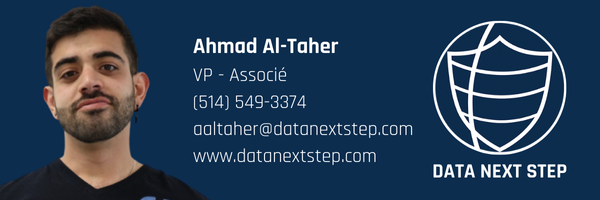
In the modern world of software development, security cannot be an afterthought. Application Security (AppSec) has become a cornerstone of DevSecOps, where security is integrated seamlessly into the development pipeline. As organizations adopt AI-driven tools and processes, the scope and complexity of AppSec evolve, demanding a proactive approach. This article dives into the fundamentals of AppSec in the context of DevSecOps, the challenges developers face, and how AI can help secure applications from the ground up.
What is AppSec in DevSecOps ?
Application Security (AppSec) is the practice of securing software applications throughout their lifecycle, from design to deployment and beyond. In DevSecOps, AppSec is a continuous process, integrated directly into CI/CD pipelines to identify and address vulnerabilities before they reach production.
Key Components of AppSec :
- Secure coding practices.
- Regular vulnerability assessments and penetration testing.
- Automated tools for static and dynamic application security testing (SAST and DAST).
Common Threats in Application Security Understanding the most common threats is essential for mitigating risks. The OWASP Top 10 is a widely recognized list of critical security risks for web application
Examples of OWASP Threats :
- Injection Attacks : SQL injection and command injection vulnerabilities.
- Broken Authentication : Weak or misconfigured authentication mechanisms.
- Cross-Site Scripting (XSS) : Attacker-controlled scripts running in user browsers.
How AI Enhances AppSec best practices ?
AI and machine learning are revolutionizing AppSec by automating the detection of vulnerabilities and streamlining remediation efforts.
AI-Powered AppSec Tools :
- Snyk : Identifies vulnerabilities in open-source dependencies.
- OWASP ZAP (Open Source) : Automated dynamic application security testing (DAST).
- Semgrep (Open Source) : Lightweight static analysis tool for finding security issues in code.
- SOOS : practical supply chain security to the masses
- GitHub Copilot Security – CSM with automation security issue detection
Benefits of AI in AppSec :
- Faster vulnerability detection through automated code reviews. AI tools quickly scan and analyze large codebases, identifying security flaws before they become critical issues. This reduces manual effort and allows developers to focus on fixing problems early in the development cycle.
- Anomaly detection in real-time traffic. AI continuously monitors network and application activity, identifying unusual patterns that could indicate attacks. This proactive approach helps in detecting and mitigating threats before they can cause significant damage.
- Predictive analytics for proactive risk management. AI-driven insights analyze historical data to forecast potential vulnerabilities and security threats. This enables organizations to address risks before they materialize, strengthening overall security resilience.
AppSec Best Practices for Developers
Developers play a critical role in ensuring application security. Here are key practices to embed security into the development lifecycle :
- Shift Left: Start security testing in the earliest stages of development. This approach helps identify and fix vulnerabilities early, reducing costs and risks before deployment.
- Implement Secure Coding Standards: Follow frameworks such as OWASP ASVS. Standardized security guidelines ensure consistency across development teams, minimizing human errors and weak implementations.
- Automate Testing: Integrate SAST, DAST, and Interactive Application Security Testing (IAST) tools into CI/CD pipelines. Automated security scanning speeds up vulnerability detection and remediation, enabling continuous security without slowing down development.
- Regular Training: Educate developers on emerging threats and mitigation techniques. Ongoing education fosters a security-first mindset, empowering developers to build resilient applications from the ground up.
Our Experts Insight
“For many of our clients, we observe that security is not a priority during development. There are multiple reasons for this. For instance, in the first phases of development, the team is prioritising features to make a working prototype often called MVP. Then usually, comes the feature requests of clients. Generally speaking, the decisions of the progression of a team will be led by monetary reasons.
Which means, prioritising features or new development to earn more money or save money. Working on securing the app has no direct financial impact. It often mediates to risques and costs money to implement. Neglecting security for too long will have a high price which in most cases, teams are unaware of the exposure they create for hackers when publishing software. It’s alarmingly common to find hardcoded tokens, secrets, or even vulnerable frameworks in their code.
We always recommend adopting a ‘security and privacy-first’ mindset when developing solutions, also known in the industry as ‘shifting left.’ By integrating security measures early in the development process, organizations can drastically reduce vulnerabilities and risks. Furthermore, keep in the backlog all the security tasks that have to be done, so no one will forget and will be prioritised in the time being”
Ahmad Al-Taher – Data Next Step

💡 Need our expert advice? Let’s talk! Book your free consultation today.
The Future of AppSec in the AI Era As AI continues to evolve, AppSec will become increasingly automated and predictive. Future trends include :
- AI-Driven Threat Hunting : Using machine learning models to identify novel threats.
- Integrated DevSecOps Platforms : Unified solutions combining development, security, and operations.
- Regulatory Compliance : Automation tools to ensure adherence to frameworks like SOC 2 and GDPR.
Application Security is no longer optional—it’s a necessity in today’s fast-paced development environment. By embracing AppSec as a core component of DevSecOps, organizations can ensure their applications are secure, compliant, and ready for the challenges of the AI era. Join us in our upcoming webinar as we explore how to effectively secure both applications and infrastructure with expert insights.
